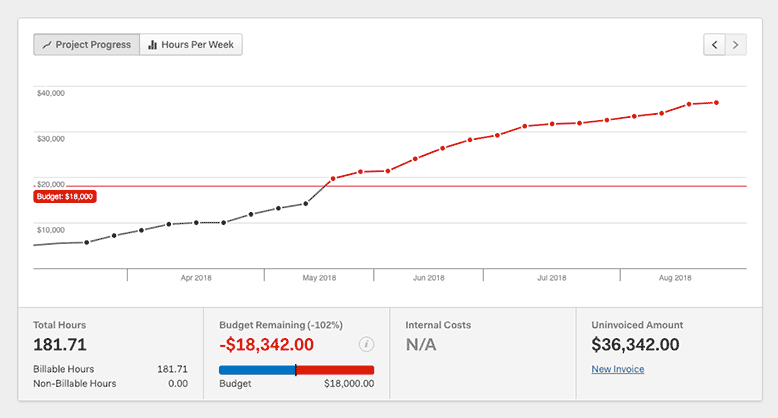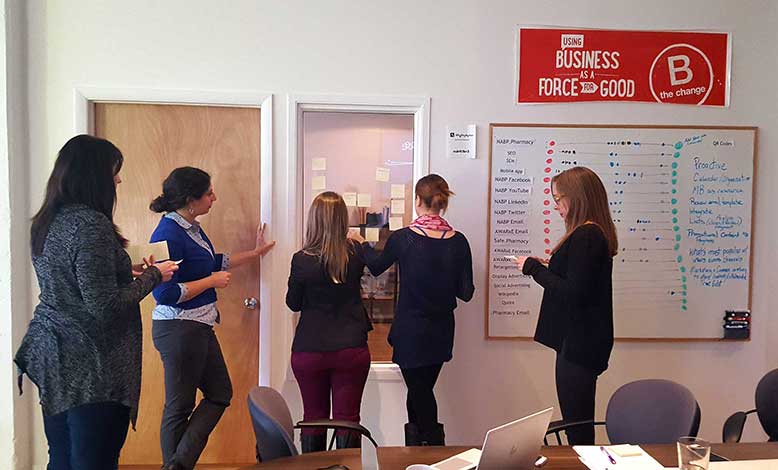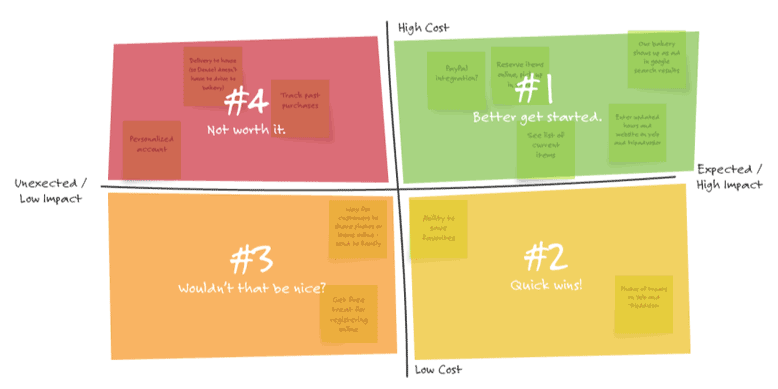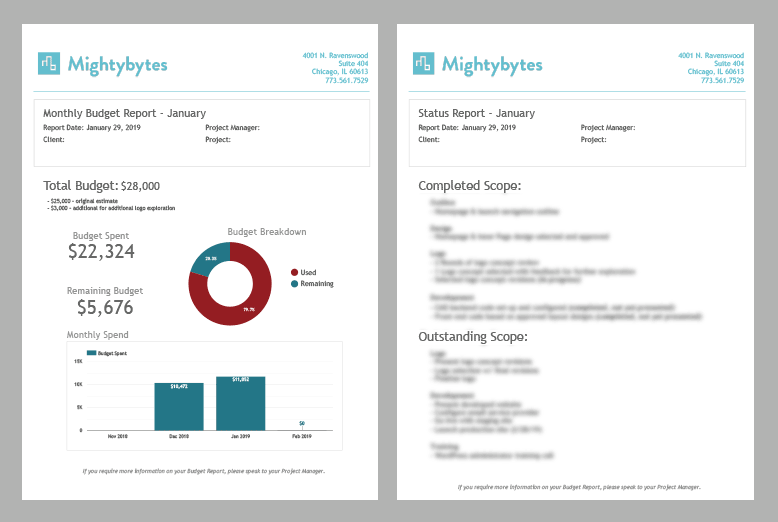How to Keep a Website Project on Budget

Website projects are notorious for going over budget, but it doesn’t have to be this way. We’ve picked up a few tricks over the years to address the most common website project budget issues. We hope you find them helpful.
When we ask prospective clients why they’re looking for a new agency, it’s common to hear that their previous agency “didn’t deliver what they said they would” or “kept going over budget”.
Managing digital products involves many moving parts, lengthy timelines, and shifting priorities in an often complex technology landscape. Continuous learning is inevitable while budgets or timelines are often immovable.
So, what are ethical agencies and their clients to do? Here are some things we’ve learned to maintain productive collaboration and high-quality work within the constraints of a finite project budget.

Four Common Reasons Website Projects Go Over Budget
Websites and other large digital projects go over budget for many reasons, but here are some of the most common:
- Mismanaged Expectations: Communication problems and misunderstandings during a project lead to misaligned expectations about the final product.
- Budget and Goal Misalignment: Agencies and clients aren’t realistic, putting a project at risk from the start. Sometimes the budget simply isn’t enough to support the project.
- Over-Planning: Tying a project to an ambitious plan created up front doesn’t leave much room for learning or shifting gears when needed. Adhering to such stringent guidelines sets projects up for failure.
- Man Behind the Curtain: By not involving their clients in important project-related decisions, agencies risk presenting ‘grand reveal‘ solutions that drastically miss the mark. This wastes time and money and often damages relationships.
There are plenty of other ways for projects to go off the rails, of course, but rarely is the reason that intentions weren’t good. Everybody goes in excited for success. By following some simple guidelines, you can ensure that success actually happens.
Fixed Bid-Managed Scope
Mightybytes has executed hundreds of large digital projects over the course of our 25 years in business. During that time, we have experimented with numerous ways to successfully execute projects on time and on budget. Of those we’ve tried, an approach called fixed bid-managed scope (sometimes also called fixed budget-variable scope) works well on large website projects for a few reasons:
- It is fairest to all project stakeholders and based on mutual trust.
- The approach is flexible while still focused on quality.
- It prioritizes outcomes rather than features, which increases chances for success.
- Budget and timeline remain fixed while scope varies based on continuous learning.
This is not the only way we bid and execute digital projects—we have numerous ongoing retainer clients as well. However, if a large digital project has many unknowns—and let’s face it, which one doesn’t?—this approach gives everyone the flexibility necessary to execute the project on-budget while also giving clients the high-quality solutions we’re known for.
What is Fixed Bid-Managed Scope?
Outputs are easily quantified things that we produce—number of products or features, number of releases, or velocity of development teams. Outcomes are the things that result when we finally deliver those features and the customer problems are solved. True value is realized in these outcomes, both for the business and for the user or customer.
— Melissa Perri, Escaping the Build Trap: How Effective Product Management Creates Real Value
Fixed bid-managed scope embraces change and learning that occurs throughout a project, from early product roadmapping sessions to launch and beyond. By using an iterative and collaborative approach to problem-solving that puts user needs first and focuses on outcomes rather than a checklist of completed deliverables, chances for success are significantly higher.
In the simplest terms, an agency agrees to execute a project for a specific fee while the actual deliverables for that fee vary as project stakeholders learn more and re-prioritize over time. Taking this user-focused, outcomes-driven approach, it is also possible that clients will get solutions faster and cheaper as well because you don’t waste time building unproven or misaligned features. This is known as The Build Trap and it can wreak havoc on any project.
Successfully navigating a fixed bid-managed scope project requires a few key things:
A Comfortable Budget
Digital products have many facets. Done right, r
We discuss budgets during the first conversation with any potential client. They typically have budgeted for this project up front so it helps to know what their expectations are. Similarly, we have reference budget data from hundreds of previous projects, so after a brief introductory conversation, we can usually tell if their expected budget range is realistic for what they want to accomplish.

From these initial numbers, it’s possible to create a budget roadmap and improve financial projections as the project takes shape, but making sure expectations are aligned up front saves a lot of time and energy later on.
If prospects don’t know what to expect regarding budget, that’s understandable, and we can help them figure things out. We offer project scoping and grant planning workshops for just this purpose. If they’re not willing to share budget expectations up front, we will likely decline the project after that first conversation.
Which brings me to my next point…
Trust & Transparency
To successfully collaborate, clients and agencies must establish and build trust. This doesn’t come easy in the business world, but it is critical to project success. Great amounts of uncertainty exist at the outset of any project. Both sides make assumptions about what the other knows and what users want. If you don’t foster trust early on, you’ll waste time and money documenting things meant to cover your ass rather than setting to the task of solving problems right away.
As a Certified B Corp, Mightybytes runs a third-party assessment every few years to ensure that the entire company operates with the highest levels of accountability and transparency. This translates to how we approach projects as well. We nurture trust early in a project by hosting discovery workshops where collaboration, co-creation, and consensus-building lead to shared learning. This fosters mutual trust and moves things forward quickly.

Sharing Project Risk
Tied to a plan, organizations actually cut themselves off from the most important cost-saving strategy of all, continuous learning and innovation.
— Pamela Meyer, author of The Agility Shift: Creating Agile and Effective Leaders, Teams and Organizations
When risk is inequitable, bad things happen. With a fixed bid-managed scope project,
Conversely, on fixed bid-fixed scope or waterfall projects—common when such projects are awarded through an RFP process—learning is often viewed as problematic rather than a natural part of the project process. Because of over-planning and contractual obligations, stakeholders on both sides must adhere to a project plan created at the outset, even though many details become irrelevant as new learning occurs. This can lead to budget, timing, and scope problems which cost money, damage relationships, and produce inferior products. And that sucks.
By embracing change as a natural part of any project, stakeholders using the fixed bid-managed scope approach can pivot or adjust parameters quickly to keep things moving forward.
Users First
Clients have business goals, and those are important. They cannot, however, be pursued in a vacuum. By prioritizing users throughout a project, then cross-referencing their needs with business goals and testing potential solutions for user input, we can shift focus as we learn new things, reducing waste or unnecessary features in the process.
In fact, putting users first often makes the case for launching a website or digital product early, so you can collect data on what resonates and what doesn’t. It’s possible that this approach could bring your website project in significantly under budget.
Focus on Outcomes, Not Features
Listing desired features, then prioritizing them, is an important part of defining any website project. Features are tangible, easy to grasp. They generate fruitful discussions. However, many of those features, as amazing as they might seem on a whiteboard, simply won’t resonate with users nor will they help you achieve success.
Focusing on desired outcomes, though more abstract, helps you stay focused only on the things that will move you toward success. It’s important to ask yourself when weighing the priority of any feature, “Will this help me reach my goals, and if so, how?” This becomes the foundation for a hypothesis you can test with real users.

Ruthless Prioritization (And Re-prioritization)
Defining a clear prioritization process is critical to fixed bid-managed scope projects.
- During early strategy and planning, we create a blue sky list of potential project features, often done during ‘How Might We’ exercises in workshops.
- We then cross-check these against desired outcomes and prioritize them based on risk and value in a standard grid format. Those in the high risk/
high value quadrant are typically prototyped first and tested with real users. - This ensures that budget priorities go to executing features with the highest chance for success while also mitigating risk quickly through regular testing cycles.
As a project progresses and features are tested and executed, we revisit the priority list with our clients against the project’s overall budget and timeline. Together, we make decisions to keep things on track. Oftentimes, this results in shuffling priorities around to maximize results while still launching on time and budget.

Project Reporting
During any project, agency and client commit to ongoing communication. Part of this process, budget reporting reduces risk while also keeping everyone focused on delivering the best possible work with the highest value.
Mightybytes provides budget reports every 2-4 weeks, depending on what works best for both teams. Our reports show an overall comparison of how budget used tracks alongside project progress and desired timeline as well as any important considerations that could impact project success. These reports become stepping stones for ongoing conversations about how to maximize the
Talk About the Hard Stuff
Disagreements can be healthy and productive if they are conducted with mutual respect and a shared commitment to making the project a success.
Our client, fellow Certified B Corp Dharma Merchant Services, told us the quote above and we couldn’t agree more. It is important that all project stakeholders feel comfortable talking about difficult topics like budgets, oversights, missed deadlines, and so on. Accountability is key. While we always aspire to the highest standards, no team is perfect. Mistakes happen. Clients and agencies should feel comfortable discussing these issues productively (see trust & transparency above).
Executing the Perfect Project
There is no guarantee that every website project will go off without a hitch. By taking a fixed bid-managed scope approach to these projects, however, risk is minimized across the board. Lines of communications remain open and surprises are few. Client and agency teams know what to focus on at any given moment and, through ongoing reporting and communication, everyone is aware of project and budget status. This helps teams prioritize and re-prioritize to keep things on track and under budget. That means more sustainable financial practices, and a more successful project all around.
To learn more about agency pricing and budgeting practices, check out our handy guide. You can also read about our approach to running a more impactful digital agency in our post on sustainable web design, our code of ethics, or any one of our numerous posts on corporate digital responsibility.



